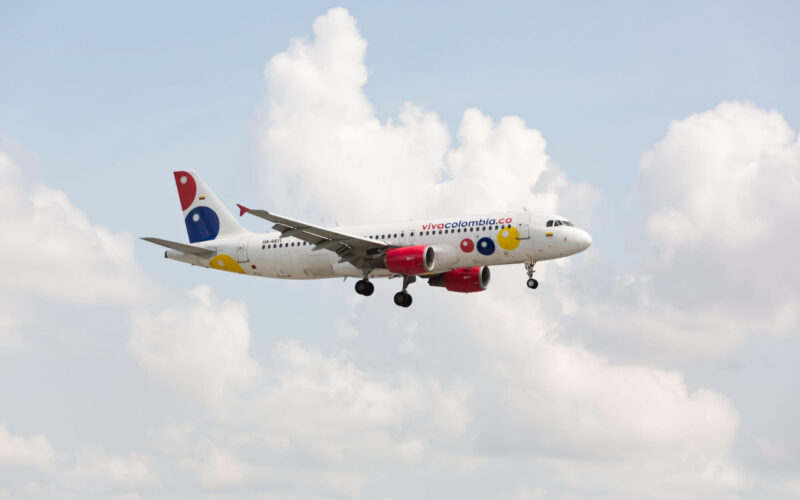A VivaColombia Airbus A320 has landed with minutes to spare, having just 200 kilograms of fuel remaining after a flight involving several missed approaches and diversions.
The incident is reminiscent of LaMia Flight 2933, which crashed on November 28, 2016, near Medellin, killing 71 of the 77 people onboard. The investigation found that the crash was caused by the plane running out of fuel, and that the crew had missed opportunities to divert or declare an emergency.
According to a report by the Aviation Herald, the VivaColombia aircraft, HK-5378, was performing flight VH-8332 from Cali (CLO) to Riohacha (RCH) in Colombia, on October 17, 2022.
The flight was due to take 80 minutes but after first diverting to Medellin (MDE), the crew then made another diversion to Monteria (MTR), eventually landing around 3 hours and 20 minutes after departing from CLO.
Very roughly, an Airbus A320 burns approximately 40 kg per minute, meaning the crew had around 5 mins of flying time left when they landed.
Viva is a low-cost carrier with an all-Airbus fleet, comprising 21 A320 aircraft in service and another 25 on order, according to Cirium data.
Why did the crew divert?
The flight was first interrupted while descending towards RCH. The crew aborted the approach at about Flight Level 180 (18,000 feet above sea level) and entered a hold for 30 mins.
The aircraft climbed back up to FL370 and the crew decided to fly to MDE. However, they once more decided to abort an approach, breaking off the attempt at about 15,000 feet. The A320 climbed back up to FL210, where the crew declared an emergency and then diverted to MTR for a landing on runway 32.
According to the Aviation Herald, the crew broke off the approaches to RCH and MDE due to bad weather. Weather reports from the time of the flight showed thunderstorms for both RCH and MDE.

VivaColombia VH-8332 flight path courtesy of FlightRadar24.com
How much fuel should be on board when a plane lands?
The website published a photo, reportedly from a passenger, showing a close up of the A320 electronic fuel page from the flight deck, with 100 kg in the left tank and 110kg in the right tank.
The picture also shows that the aircraft used 6,780 kg of fuel in total, meaning the aircraft had roughly three hours of fuel on board for the entire flight. [Editor’s note: Fuel flow varies during different phases of flight, with aircraft burning more fuel during a climb, for example, so this is a very rough approximation.]
When calculating how much fuel to carry for a journey, airlines must account for several factors, including, but not limited to, the fuel required for taxi, the fuel required to get to the destination, contingency fuel, fuel for an alternate destination and final reserve fuel.
The final reserve fuel is usually equivalent to the fuel required to fly for 30 minutes at 1,500 feet above the alternate or destination aerodrome. In the case of an Airbus A320, it is roughly 1,200 kg. If the crew becomes aware they cannot land with the final reserve fuel on board, they must declare an emergency, as was apparently the case in this incident.

